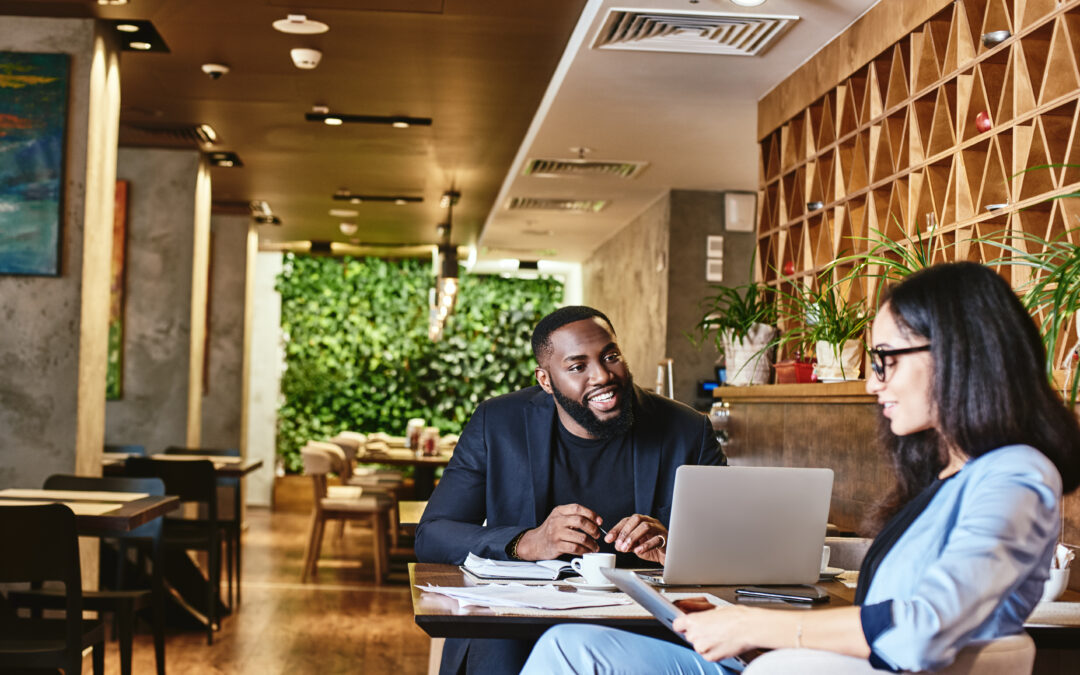So much helpful advice is contained in my past interviews that I thought I should organize it by topic. When the recommendations of these successful attorney-marketers are grouped together, you can learn a lot about marketing your law firm.
This article focuses on affordable changes you can make that will lift the results of the marketing you are already doing.
1. Brand yourself
Brandon Pettijohn recording
[13:59] “I purchased the name The Port City Attorney while still in law school. I have been building The Port City Attorney brand since 2017. Having enough time in the space has helped, and the resulting brand recognition has been a big part of our growth.”
Josh Hodges recording
[4:25] “A lot of people in smaller towns don’t want to go to the big city if they don’t have to. And I wanted to brand as the local guy. I know having a nickname like The Bulldog works, but I thought it was cheesy and didn’t want to do that. But I knew that having something you’re known for was needed.”
[4:50] “The best name thing I could think of that did not embarrass me was The Hometown Lawyer. But then I really have to be Mr. Hometown and publicize other local people. So we do a lot of videos where I shout out local restaurants. I’ve done that for a couple of years.”
My comments
You don’t need to go to extremes to have a memorable name. You may not be comfortable with combative brand names like pitbull, hammer, or bulldog, but many less aggressive names exist. Examples from my interview list include: money lawyer, breakup lawyer, justice team, brand attorney, lemon law queen, case handler, Myrtle Beach biker lawyer, MVP accident attorneys, and CEO lawyer.
Using a brand name instead of your name also increases the value and salability of your practice. New clients will not expect you to be available. However, rebranding takes time and repetition, so is best done early in your firm’s life.
2. Locate in a growing area
Brandon Pettijohn recording
[10:27] “Wilmington is the base metropolitan area of southeastern North Carolina. One of the growing communities just outside of Wilmington is Leland, where they’re putting hundreds of million dollars into the community. Lots of people are moving here. So I moved my office across the river to Leland because there were no attorneys here in the area besides real estate closing attorneys. We have noticed steady growth in qualified leads coming from organic Google searches since we are the only litigation attorney in town.”
[11:07] “That relocation has been good for our growth. We gambled moving out of the downtown because I knew people might not want to cross the bridge for meetings. But I also factored into the decision the effect the Covid era had on everybody. People are more comfortable with Zoom meetings. While clients still come into our office, we don’t have the volume we did in 2019. We kept a small office in Wilmington just in case, but we haven’t had to use it.”
My comments
Brandon physically relocated, but you can obtain similar benefits by inexpensively obtaining co-working space in a growing or low-competition locale, and setting up a Google My Business profile for that location.
You can shorten the time it takes to obtain business from that profile by (1) beefing it up with photos, videos, and reviews, and (2) regularly adding content to your site which includes that location’s name.
I know one large injury practice that now obtains 40% of its new clients from a neighboring city where it has one unstaffed co-working space costing only $150/month.
3. Monitor your intake
Josh Hodges recording
If you recommend them, can you share the answering service that you use?
[20:05] “I give every answering service I have used a B- or C+. The last one I used provided great service but were sometimes rude to callers. The new service is peppy and nice on the phone, but when I have a problem they don’t get back to me quickly.”
[20:53] “You need to listen to the calls and give them pointers. You can’t assume they’re picking up every time, either. With CallRail you can see if your calls are being answered. If people think they can get away with being lazy or not doing their job, sometimes they will.”
Do you listen to the calls or make mystery calls?
[21:36] Yes, I have mystery called, I have had my mother in law call, and I have had my mom call. They know my number now so I have had to get a new phone. I also send in forms under goofy names to learn how quickly they get back to me. They do pretty well.”
[22:04] “Lawyers who have large and successful firms tell me that they still worry about their intake and are always trying to make it better. It is just something that’s never perfect.”
[22:15] “I think compared to a lot of firms my age and size, we do pretty good, but I’m not happy with pretty good. I’m trying to get to very good. I’ll call back when I get there.”
My comments
If you are not regularly monitoring and training your intake team, then I’ll wager that your signup percentage can be improved. I know one firm whose conversion rate jumped 40% with some instruction and incentives.
A past interviewee whose business is training intake teams finds that his client firms frequently double their signup rates once they learn how to close during the initial consultation.
You should begin the improvement process by tracking the number of calls, appointments, and signups daily, weekly, and monthly. Don’t let software slow you down; a simple spreadsheet can be used for this tracking. Next, be sure to record your calls and periodically listen to them.
Finally, always seek to close in one call. Depending on your specialty, closing can mean setting an appointment with an attorney, or it can mean sending a retainer agreement and getting it signed within 3 days.
4. Improve your customer service
Adam Rossen recording
How do you keep that high level of customer service consistent throughout your firm, from the person answering a phone all the way through?
[14:23] “It takes a lot of coaching and a lot of mentoring. But it goes back to having clearly defined core values and then hiring, firing, and training based on those core values.”
[14:36] “It’s something we have learned a lot about in the last three years. It starts with hiring, which is designed like our marketing to attract and repel. So first and foremost, it’s about people who wouldn’t be a good fit or don’t fit our core values or don’t understand what we do for people here.”
[15:09] “We have invested heavily in training in the last two years, and we have built tons of modules, videos, and tests for training for many of our departments. We record our calls, and go over them as a team. We have scripts, but always want to make sure we don’t take out the human component of it. Right? ‘I got arrested and the police beat me up.’ ‘Okay, where do you live? Because that was the next question, right?”
[15:46] “We want to hire naturally empathetic people and then continue to motivate them and give them tips, tricks, and responses for different scenarios that they might encounter like objections to price.”
My comments
Great customer service is typically only achieved with the regular monitoring, training, and motivating that comes from paying personal attention like Adam does.
Yes, it starts with hiring empathetic people, and scripts and worksheets will help, but if you or a senior team member have the time available, role-play sessions will be the most effective way to bring new people along. Alternatively, have them sit near your best role model so they can hear how various situations are handled by a pro.
5. Check up on your agency
Adam Rossen recording
[10:34] “With any agency a lot of oversight is required. They have other clients. Nobody will ever give it the full attention that you would yourself. So there is lots of communication.”
[10:55] “I used to be the lawyer to every client. And then for a few years we had two lawyers, me and Manny, who is now the managing partner. Now we have eight attorneys and it is making sure they have that deep personal relationship with say Susan, one of our board certified criminal defense attorneys. We have internal controls to make sure that the legal work, the communication, and the relationship building with our client, that Susan will do the same thing in the same way as if I was representing that client.” So it’s the same thing with BluShark. It is work that you can delegate, but you still have to manage it.”
[11:48] “That is so often overlooked and a very important piece of advice. Sometimes when I hear agencies are not delivering results, you have to look in the mirror and ask, ‘How are you tracking their progress? Have you set up the internal processes and foundation to make sure you are properly handling those precious leads?”
Samah Abukhodeir recording
[8:11] “Yes, absolutely. ROI is super important. We have a practice management system that all of the leads go through. And within that practice management system we are able to see what call number the lead came through. We create reports every month and review those reports with our vendors to make sure that we are getting bang for the buck that we’re spending on these marketing leads. Marketing is not cheap.”
[8:11] “This is something that I have been studying. It is one part of the business that I didn’t know anything about. For the last 9-12 months I have been researching marketing left and right.”
Josh Hodges recording
How did you vet your SEO vendor and the PPC agency? That is a question I hear frequently from attorneys.
[8:35] “The first year or two that I was in business, I had no money to put into it. So I read a lot about SEO and PPC and started doing them on my own. I had some success early on and learned enough to know which questions to ask.”
[9:00] “An SEO vendor needs to talk about more than impressions and rank. I want to know, ‘Did I get calls? Were they good calls? Did I get consultations? Did they turn into cases? What target KPIs are we talking about?’”
[9:40] “I have my own AdWords account that I set up, and I let them into it. I’m not going to let them run ads for me with me not being able to see results for myself with them providing me a report. Are they counting as a conversion a prospect who types in my name? That person would have found me anyway. I care about people typing in ‘car accident near me.’”
My comments
Someone has to police your digital marketing agency. Josh has a background in SEO and PPC, which allows him to keep his agencies on track.
If you don’t, consider using someone knowledgeable about the work your agency should be doing to monitor them. Unmonitored agencies are more likely to give your account less attention, for they nearly always have more work requests from clients than they can handle.
I recommend that you communicate regularly, require reports containing the proper metrics, and share detailed results with your agency like who is actually signing up and which signers are quality clients. This sharing will help your agency focus on generating wanted prospects, rather than just prospects.
6. Track your numbers
Joe Nazarian recording
How do you stay on track and get your team to understand the importance of those numbers?
[16:08] “We have a weekly meeting. We input all of our numbers and track them on a quarterly basis. When we have our quarterly meetings, we discuss all the numbers to see where we are off and what is a problem. We immediately adjust, address the issue, and get it fixed as soon as possible.”
[16:30] “We understand exactly what’s happening, what needs to be strengthened, what is going wrong, and what is going right. Even if I miss a meeting, I can pull up the company scorecard and see if things are falling apart or going well. I can read the numbers and see if they are off.”
My comments
While your agency needs to know the end result of its marketing, you should know the beginning of the agency’s effective marketing – the marketing that delivers clients and wanted but unconverted prospects.
How many leads, appointments, and signups do you need each week and month to hit your growth and profitability goals? Are you ahead or behind plan? By how much? These performance indicators should be monitored daily by you and the key members of your team.
7. Solicit reviews
Adam Rossen recording
How were you getting your satisfied clients to leave you those positive reviews?
[33:13] “It is one happy client and one review at a time. It starts with our strategy session, building know, like, and trust, and treating them like people. It starts with getting to know them rather than just talking about their case or what they’re accused of doing.”
[33:47] “We are relationship builders. Yeah, I’m good at marketing, and I was good at law. But it is about the relationship. Not every client is going to say, ‘I was wasted and hit five cars and ran, but my lawyer got me off.’ Some will put the juicy details in their review, but they don’t have to. We tell clients that they can just say how they felt when they got arrested, how they found us, and how we made them feel. Were we easy to talk to, how did we treat you during the case, did we get you amazing results? A lot of people will say, ‘I don’t want to go on video for you, but I’ll write that all day.’”
At what point are you asking for that review? Are you sending them an email with the link?
[34:56] “People differ on this. They say you can ask for a review at any time. We prefer to ask when the case is over. We ask by email and text. And if we just finished their case in the courthouse and got him a reduction of charge or dismissal, we will ask, ‘Do you mind writing it right now? It will really help us.’ We tell people, ‘When you were stressed and didn’t know where to turn, your review helps us help the next person who is stressed and doesn’t know where to turn.’”
Arkady Frekthman recording
You have impressive past client reviews. How are you getting those?
[21:53] “We have a system where we ask clients to write us a review, usually at different stages. It doesn’t have to be when we’re giving them the check. Of course, that’s the best time. But if you do something nice for them in the beginning like getting them a payment to get their car fixed, then you could ask them, ‘Hey, do you mind writing us a review?’ We’ll send them a link either by text or email, whatever they prefer. And then just a little bit of a follow up and then they’ll click and they’ll write us a review.”
[22:30] “Another thing I’ve been doing, when somebody calls you about a matter that you don’t handle, say real estate or divorce, but instead of saying, ‘We don’t do that’ and hanging up, I’ll speak to them for a few seconds and recommend somebody else who does. Then if they’re happy with the consultation, we will ask, ‘Oh, do you mind leaving us a nice review because we helped you?’ Oftentimes they will.”
My comments
Reviews need to be pursued. To remain competitive with firms which have an active review solicitation effort, you need to devote effort to building up your review collection.
Seeking them needs to be part of your firm’s culture. Obtaining good ones should be celebrated. And those who obtain the most or the best reviews should be rewarded. A solid incentive program can be all that is needed to get and keep the reviews flowing.
8. Stay in touch
Samah Abukhodeir recording
Do you have any follow up for those folks who inquire but do not sign up right away?
[15:35] “We have different campaigns through our lead management system. Depending on how that call goes with the attorney, the attorney will put them in a different campaign depending on if we want to nurture them as a future client or if this is definitely not the type of client we want. So there are different campaigns that they can be put through.”
Have you tried text campaigns?
[16:04] We use texts, emails, and phone calls. They are called gas calls. Even when a client finishes their case, we will still check up on them after 6, 12, and 18 months.”
I’m sure the regular check-ins contribute to your referral flow. Do you keep in touch any other ways?
[16:36] “We have a newsletter that goes out once or twice a month. In it we will touch upon something that is going on in the family or probate world.”
Adam Rossen recording
How do you stay in touch with your past clients?
[22:16] “We mail a printed monthly newsletter. We also send an e-newsletter. We want to stay in touch with past clients as many ways as we can. We encourage them to follow us on social media. Everybody on our staff is encouraged to send out birthday, congratulations, sympathy and thank you cards. We have internal metrics of how many cards we are supposed to be sending out per month.”
Joe Nazarian recording
[5:48] “One other thing we do is we make sure that we send gifts to all of our clients, friends and family once or twice a year. And we’ve gotten a lot of great results from that.”
My comments
I like Joe’s approach of – as he phrases it – watering the green grass. Promoting to your fans to obtain more referrals like Joe does generates calls from the best kind of prospects – ones who aren’t lawyer or price shopping.
A newsletter is another proven way to lift your past-client referrals, for they can’t recommend you if they don’t remember your name. Most of my interviewees send one at least monthly.
9. Tighten your focus
Adam Rossen recording
[31:51] “My advice is to focus on one or two marketing channels, and commit to them. That is hard for a lot of people. You get FOMO that somebody else is doing something and you are not. For us, it was getting reviews because the reviews help with our Google business profile and improves conversions because of the social proof.”
[32:50] “Six years ago people were telling me it can’t be done in criminal defense. We have over 750 reviews now, and we will probably have over a thousand within six months.”
I like your advice of picking a few high priority items to focus on. Some attorneys I speak with have 100 things they want to do.
[36:03] “Paralysis by analysis. Our third core value, which is one of our most important, is take action. Don’t confuse activity with accomplishment. It is better to go deep to accomplish a goal than to take a shotgun approach and dabble in a bunch of little things.”
[36:26] “We don’t handle any other type of law. I know you know about the importance of niching down. That advice applies to marketing as well as to a practice area.”
My comments
It takes patience, but Adam’s advice to focus on a limited number of marketing channels is solid. You want quick results, but the channels that deliver quick results aren’t the best ones to use long-term.
The channels that time to deliver, like SEO, social media, reviews, and client referrals – are the ones that will deliver over the long haul.
10. Get help from peers
Diego Bustillos recording
Tell us about the community aspect of your coaching program.
[11:43] “The community has been a huge part of our growth in the coaching program. We get to exchange ideas and especially ask questions. Everyone is very open. It’s like we are part of a global law firm. And when we all are growing, we are all helping more people.”
[13:29] “Reaching out to other attorneys, not being afraid to be vulnerable and saying, ‘We’re struggling with this. Has this ever happened to you? How did you solve it? What tools did you use?’ Three attorneys may provide three different answers, but we will pick one and implement it.”
My comments
Periodically meeting either in-person or virtually with improvement-oriented owners of small law firms can accelerate your growth. As Diego says, a group can be especially helpful in moving you past an issue that is slowing your progress.
You will also learn what is working for others, whether in management, marketing, or technology, which can save you much experimentation. And perhaps most valuable, you are no longer alone. Now you have colleagues you can confide in, sharing your concerns and learning that you are not the only one struggling with growth challenges.
Conclusion
Improving your marketing results
- Brand yourself
- Locate in a growing area
- Monitor your intake
- Improve your customer service
- Check up on your agency
- Track your numbers
- Solicit reviews
- Stay in touch
- Tighten your focus
- Get help from peers
That wraps up my interview excerpts. I hope you found them helpful.
Another way to obtain more clients is expanding your referral network. We have introduced 170 lawyers to over 900 prospective new referral partners, and can do similar work for you.
Click here to learn more about our 90% done-for-you service.












